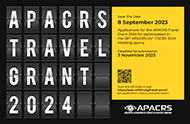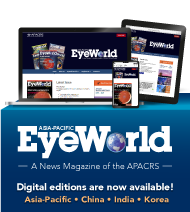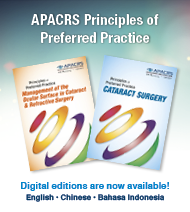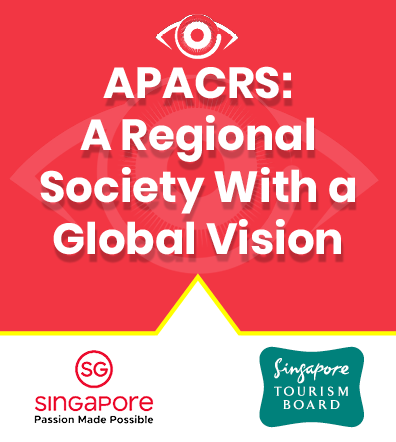Volume 21, Number 30 |
26 August 2016 |
VeraPlug granted Canadian approval
The VeraPlug Punctal Occluder has been granted regulatory approval in Canada, developer Lacrivera (Lexington, Kentucky) said in a news release. The device is available in four sizes (from small to extra-large) and available in sterile and non-sterile bulk. The device was approved in the U.S. in 2014.
MATrX-1 Phase 3 study of trabodenoson completes enrollment
The active recruitment phase for MATrX-1, a pivotal Phase 3 study of trabodenoson for the treatment of glaucoma, is now complete, developer Inotek Pharmaceuticals (Lexington, Massachusetts) said in a press release. Trabodenoson is a first-in-class selective adenosine A1 mimetic under investigation for reduction of intraocular pressure (IOP) that has been observed in Phase 2 clinical trials to reduce IOP. Top-line data from the MATrX-1 study are expected in December 2016. MATrX-1 is a randomized, double-masked, placebo-controlled trial of trabodenoson in about 335 patients with IOP greater than or equal to 24 mm Hg and less than or equal to 34 mm Hg designed to assess the efficacy, safety, and tolerability of trabodenoson over 3 months of treatment. The primary endpoint is reduction of IOP compared to the placebo treatment arm. The study includes three doses of trabodenoson: 3% (1,000 mcg) once daily, 4.5% (1,500 mcg) twice daily, and 6% (2,000 mcg) once daily. In addition, the study contains a timolol 0.5% arm to validate the sensitivity of the patient population and will serve as an internal control.
OTX-101 Phase 3 study completes patient enrollment
A Phase 3 confirmatory study of Seciera (OTX-101), a novel patented nanomicellar formulation of cyclosporine for the treatment of dry eye disease, has completed patient enrollment, Auven Therapeutics said in a press release. The multicenter, randomized, double-masked, placebo-controlled, two-arm, confirmatory trial enrolled 747 patients with confirmed dry eye disease at 47 investigational sites in the U.S. The primary efficacy endpoint is percent of patients with 10 mm improvement in tear production (as measured by the Schirmer's test) compared to placebo. Secondary endpoints include significant reduction in signs of ocular surface inflammation, as measured by conjunctival and corneal staining. In the previous Phase 2b/3 study, Seciera demonstrated robust statistical superiority over placebo vehicle for the co-primary efficacy endpoint of change from baseline at week 12 in conjunctival lissamine green staining, and in analyses of tear production and fluorescein corneal staining. It also demonstrated excellent safety, comfort, and tolerability profiles compared to placebo vehicle, with more than 90% of patients in all groups completing the 12-week study. Unlike other ocular formulations of cyclosporine, Seciera is a clear, preservative-free, aqueous solution, the company said.
RESEARCH BRIEFS
A new study showed the stability of femtosecond laser-assisted arcuate keratotomy, but the authors cautioned further studies using other platforms and nomograms are needed to corroborate the findings. In their retrospective, interventional case series,T.C. Chan and colleagues used the Victus laser (Bausch + Lomb, Bridgewater, New Jersey). A single, 450-μm deep, arcuate keratotomy was paired at 8 mm zone with the main phacoemulsification incision in the opposite meridian. The keratotomy incisions were not opened. Fifty eyes of 50 patients (mean age 66.2±10.5 years) were included. The mean preoperative corneal astigmatism was 1.35±0.48 D. This was reduced to 0.67±0.54 D at 2 months and 0.74±0.53 D at 2 years postoperatively (p<0.001). There was no statistically significant difference between postoperative corneal astigmatism over 2 years. Both magnitude of error and absolute angle of error were comparable between the two postoperative time points (p>0.283). At postoperative 2 months and 2 years, 72% and 70% of eyes were within 15 degrees of preoperative meridian of astigmatism, respectively. All wavefront measurements increased significantly at 2 months and 2 years (p<0.007), except spherical aberration. There was no significant difference in higher-order aberrations between 2 months and 2 years postoperatively. The study is published in the American Journal of Ophthalmology.
The tubal corneal (TC) distance significantly influences corneal endothelial cell density (ECD), according to a study. A.N. Tan and colleagues evaluated 53 eyes scheduled for Baerveldt glaucoma drainage device (BV GDD, Abbott Medical Optics, Abbott Park, Illinois) surgery with 36 months of follow-up. Of the 53 eyes, 13 had primary open-angle glaucoma, 30 had secondary glaucoma, and 10 had primary angle glaucoma. Central ECD significantly decreased during follow-up, with a mean decrease of 4.54% per year (p<0.001), and 6.57% in the peripheral quadrant closest to the BV GDD tube (PQC, p<0.001). In the PQC, a yearly decrease of 1.57% was shown after transiridial tube placement versus 7.43% after placement "free" into the AC (p=0.006). Endothelial cell (EC) loss was related to TC distance (mean 1.69 mm), with a central loss of 6.20% and 7.25% in the PQC per year with shorter TC distances, versus a central loss of 4.11% and 5.77% in the PQC per year with longer TC distances. A difference in endothelial cell loss by glaucoma subtype was not identified. The study is published in Acta Ophthalmologica.
A new delivery system for mitomycin-C (MMC) was successfully developed for application during photorefractive keratectomy, according to Francisco Pinheiro, PhD, and colleagues. They developed an in vitro experimental design to study a new MMC delivery system at a drug concentration of 0.02%. Sterile filter paper disks with a diameter of 8.0 mm were impregnated with MMC solution. After drying, the disks were placed on agar plates seeded with Staphylococcus epidermidis; this was followed by instillation of a drop of sterile water. After 1 minute, the disks were removed and the plates were incubated for 48 hours at 35 degrees C. The mean volume of the drops delivered from regular eye drop bottles was determined, and the inhibition zone (in millimeters) was correlated with the amount of MMC loaded onto the disks. Analysis of the inhibition zones produced by MMC indicated that 16 μg was the optimum dose to be incorporated in the disks. The mean volume of a drop delivered from eye drop bottles was 37.7 μL. One minute after the application of a single drop of a balanced salt solution, the system released an adequate concentration of MMC for PRK. The study is published in theJournal of Cataract & Refractive Surgery.
NEW PRODUCT BRIEFS
D-EYE (Padua, Italy) expanded its compatibility with iPhones to include the SE, 6+, and 6S+, in addition to the 5, 5S, 6, and 6S, for its smartphone-based retinal screening developed by Andrea Russo, MD. D-EYE has also launched an "innovative bumper design," incorporating a latch feature that will improve ease of use and efficiency.
The Instituto de Optica (Madrid) developed and launched a visual simulator, SimVis, so patients can experience how a certain implanted lens would affect their vision by simply looking through the device. The SimVis uses an optoelectronic tunable lens that changes shape in response to an applied electric current. To simulate multifocal lenses, the shape of this tunable lens can be switched so quickly that the resulting oscillations in focal positions can't be perceived by human vision. A patient looking through the device would see near and far distances in focus at the same time, as well as experience the loss of image quality and contrast that comes with multifocal lenses.

Licensed Publications |
|
Licensed through ASCRS American Society of Cataract and Refractive Surgery, 4000 Legato Road, Suite 700, Fairfax, VA 22033-4003, USA.
All rights reserved. The ideas and opinions expressed in EyeWorld Asia-Pacific Weekly News do not necessarily reflect those of the ASCRS�ASOA or APACRS. Mention of products or services does not constitute an endorsement by the ASCRS�ASOA or APACRS.
Copyright 2008, EyeWorld News Service, a division of ASCRS Media. |





 EyeSustain Update
EyeSustain Update 2024 APACRS TRAVEL GRANT
2024 APACRS TRAVEL GRANT Digital EyeWorld
Digital EyeWorld VOL. 39 (2023), ISSUE 3
VOL. 39 (2023), ISSUE 3  Membership Information
Membership Information APACRS Principles of Preferred Practice
APACRS Principles of Preferred Practice